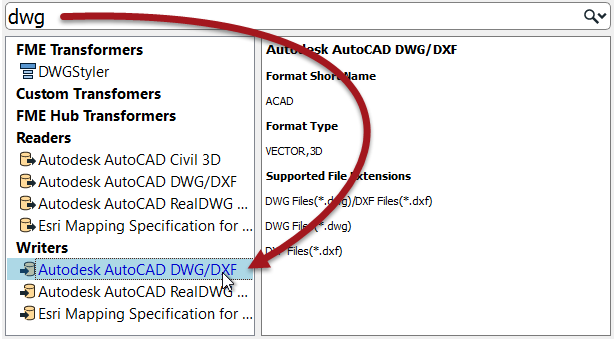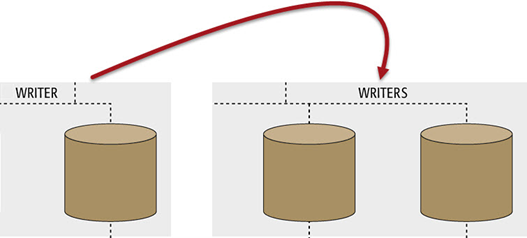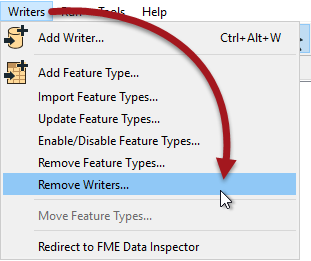Writers
A writer is the FME term for the component in a translation that writes a destination dataset. A writer writes a single format of data. In general it also writes just a single dataset (i.e. a reader can read any number of datasets but, if sent to the same writer, they will be combined into a single output dataset).
By default, the Generate Workspace dialog creates workspace with a single writer. However, this does not mean the workspace is forever limited to this. Additional writers can be added to a workspace at any time, any number of formats can be used, and there does not need to be an equal number of readers and writers.
Adding a Writer
Adding a writer to a workspace is a common requirement. There are several reasons:
- The Generate Workspace dialog only adds a single reader and writer
- Each reader and writer handles only one format of data.
- Different datasets (of the same format) may require reading handling with different parameters
Therefore the need to write multiple formats of data – such as Geodatabase and Oracle – requires multiple writers.

Additional writers are added to a translation using the Quick Add menu:

...Or by selecting Writers>Add Writer from the menubar.

| NEW |
| The ability to add a Writer using Quick Add is new for FME 2017 |
Adding a writer has this effect on the hierarchy diagram:

Removing a Writer
Not only can you add a new writer, you can remove an existing one; for example when you have an old writer whose output you no longer need. Tools exist to remove a writer from a workspace, both on the menubar and in context menus in the Navigator window.

Removing a writer obviously has the reverse effect on the hierarchy diagram!
| .1 UPDATE |
| As with readers, FME2017.1 introduces a tool to update a writer in Workbench, to bring its behaviour up to date with the current FME version. |